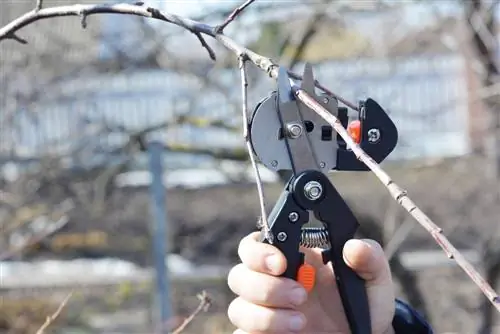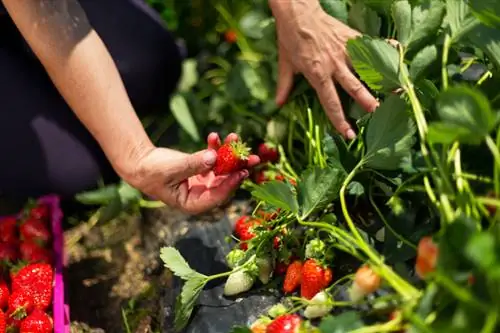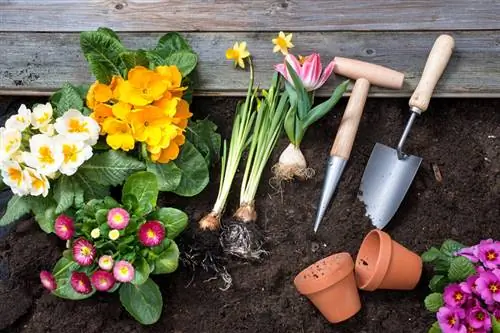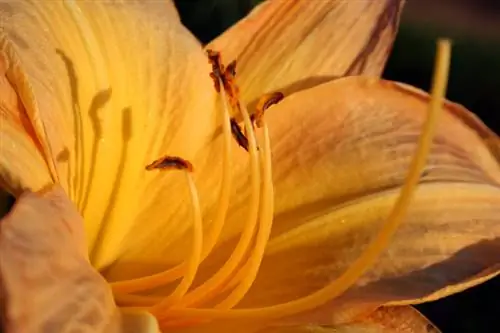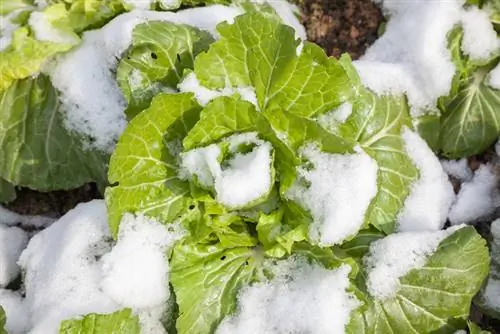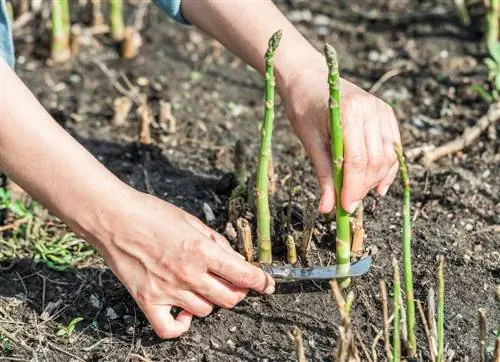- Author admin [email protected].
- Public 2023-12-16 16:46.
- Last modified 2025-01-23 11:22.
Scions are cuttings from fruit trees that serve as material for grafting onto a base. In order for this form of cultivation to be successful, you should grab the scissors at the right moment. It is also important which branches you cut off.
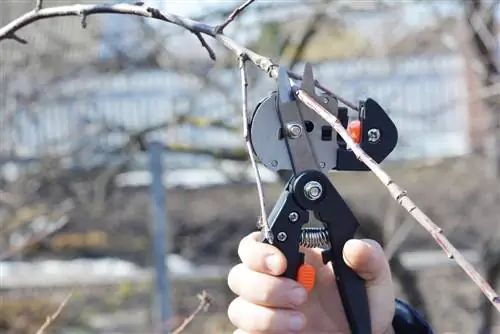
When and how do you cut scions?
The optimal cutting of scions takes place when the trees are resting when there is little sap, ideally between mid and late January. Use bypass shears to remove annual, unbranched new shoots from well-exposed parts of the crown that are about 30 to 40 centimeters long.
Time
The optimal period for cutting extends during the sap-poor rest periods of the trees. The sap flow in fruit trees begins in mid-January, when the winter was particularly mild. Apple and pear trees sprout later than plums, plums or cherries.
For such late-growing fruit bushes, you can remove the scions until mid-February, while the other varieties should be cut by the end of January. The exact date also depends on the weather, as it should be frost-free.
The right cutting technique
Make sure that the buds are not yet swollen, otherwise the scions would not last long. Use bypass scissors (€9.00 on Amazon) as they cut cleaner compared to anvil scissors. Take one-year-old new shoots from the well-exposed parts of the crown that are unbranched and pencil-thick. They should be around 30 to 40 centimeters long and have he althy growth. Cut several shoots of each variety. Water shoots or thin shoots and those whose tips are curved are unsuitable.
Tip
Peaches and apricots are suitable mother trees for scions that are cut in spring. For these trees, eye grafting makes more sense in the summer months.
That's why scions are important
If you have a particularly rare type of fruit in your garden that is showing intense signs of aging, taking cuttings can be a useful method of preservation. These provide a perfect material for a base whose fruit quality is questionable.
Storage
The cut shoots must be stored as cool, dark and frost-free as possible until you refine them. This can be difficult depending on the weather and the time of cutting, as the finishing dates are usually between March and April. The sooner you cut the wood, the longer you have to store it.
The right preparation:
- Gather scions into bundles
- tie together with a rope
- Write the variety on a plastic label with a permanent pen
Optimal conditions
It is important that the scion neither dries out nor is too wet. Wrap the shoots in slightly moistened newspaper or stick them in damp sand. Moist moss pads are an ideal cover for the plant material that you place in a box.
A storage temperature of two degrees is optimal. If there is no risk of frost, you can also store the material in the garage or shed. Make sure that no mice get to the branches and damage the bark.
Tip
Do not place the cuttings in the fruit cellar because apples release ethylene. This ripening gas can damage the buds of the shoots.

